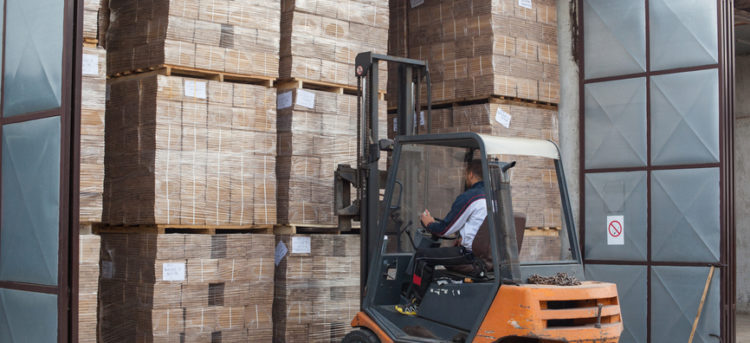Leasing is a practice that dates back to at least the 1800’s, and some historians say leasing goes back much farther than that. The current and most popular form of leasing began in the United States around the early 1950’s. The equipment leasing industry is close to $1 billion in production, with about 30% – 40% of total annual equipment investment activity coming in the form of equipment leasing.
What Is Equipment Leasing?
An equipment lease is a contract between a lessor and a lessee, which gives the lessee the right to utilize the equipment for a specific period of time (lease term), in exchange for monthly payments to the lessor.
The lessor would usually purchase the equipment outright from the manufacturer, but have the manufacturer ship it to the lessee for utilization. The lessor is the owner of the equipment and through the lease arrangement, the lessee is paying the lessor back the cost of the equipment along with the cost the lessor charges for the financial transaction.
The lessor is profitable in the situation if the lessee makes all scheduled payments until the end of the lease term, as the lessor will receive back the cost of the equipment purchase along with lease revenues.
Capital Equipment
Capital Equipment (defined as business operational technology that costs around or over $5,000) is what’s mainly leased by businesses in the United States in terms of commercial equipment types. This is due in part to the convenience of preserving cash flow by not having to come up with a significant upfront investment to purchase said equipment. In addition, purchasing equipment might not make sense if the technology is likely to be obsolete in a couple of years.
No matter what industry your business falls under—retail, manufacturing, restaurants, healthcare, etc.—equipment leasing might be a better option of acquiring a new (or used) piece of technology rather than purchasing it outright.
Equipment Leasing Options
There are a variety of different ways to structure an equipment lease contract, but the following 7 ways are the most used in the industry today:
- The Capital Lease: This allows the lessee to purchase the equipment at the end of the lease term, many times for only a $1 buyout cost or for 10% of the cost. This option might have higher lease payments throughout the term, versus utilizing other leasing options.
- The True Lease: This is called a “true” lease for a reason, as it functions like a “true” lease would function. The lessee will be offered an option to return the equipment at the end, purchase the equipment at the end, or roll-over into leasing another piece of technology. The lease payments will depend upon which ending the lessee selects.
- The Master Lease: This is utilized when the lessee is leasing multiple pieces of technology over the leasing term. This agreement helps manage all of those nuisances under one contract, rather than having separate contracts which creates a host of inefficiencies and confusion.
- The Skip Lease: If the lessee’s business is seasonal, they can utilize this leasing option where some months payments are made, then some months there are no payments made (which is where the term “skip” comes from). Note, the lease payments made during the active months are likely to be higher to accommodate for not making any payments during the down months.
- The Deferred Lease: This is used for newer businesses who are in the process of having their operations generate revenue in the next 30 – 90 days, but are in need of utilizing the equipment immediately. The lessor will usually provide a 30 – 90 day grace period before the first lease payment is requested.
- The Step-Up Lease: With this structure, the lease payments start out at a low level, but increase over time as the estimated return on investment with the equipment begins to kick in.
- The Sale Leaseback: If the lessee owns equipment free and clear, they can sale it to the lessor in exchange for a lump-sum purchase payment, with the lessor then leasing the equipment back to the lessee on regularly scheduled lease payments.
Section 179 Tax Deduction
To promote equipment leasing and purchasing for 2017, the IRS will allow businesses to deduct the full purchase price of equipment up to $500,000 along with an 50% bonus depreciation. For example, a business purchasing a piece of equipment that’s $750,000 would have the following breakdown:
- Section 179 Deduction: $500,000
- Bonus Depreciation: $125,000
- 1st Year Depreciation: $25,000
- Total First Year Deduction: $650,000
This leads to an estimate $227,000 in savings off the purchase of the $750,000 technology, just through the usage of the tax code. This leads to higher profits and a higher return on investment with the utilization of the technology. Only certain types of technology, equipment, and software qualify. If you are purchasing something more than $2 million, a reduction in the tax deduction begins to take place.
Qualifying for an Equipment Lease
There are four different leasing tiers that could would fall into to determine your chances of approval for an equipment lease, approval amounts, and your lease factor rates.
A Tier: Over 700 credit score
B Tier: 680 to 700 credit score
C Tier: 620 to 680 credit score
D Tier: 520 to 620 credit score
Other factors to be considered will be the type of equipment you are looking to lease, your desired lease length, your sales revenues, and the history of your business in particular. Some lessors might examine your financials and request bank statements to examine your cash flow.
This article was originally written on July 12, 2017 and updated on December 14, 2021.


Have at it! We'd love to hear from you and encourage a lively discussion among our users. Please help us keep our site clean and protect yourself. Refrain from posting overtly promotional content, and avoid disclosing personal information such as bank account or phone numbers.
Reviews Disclosure: The responses below are not provided or commissioned by the credit card, financing and service companies that appear on this site. Responses have not been reviewed, approved or otherwise endorsed by the credit card, financing and service companies and it is not their responsibility to ensure all posts and/or questions are answered.